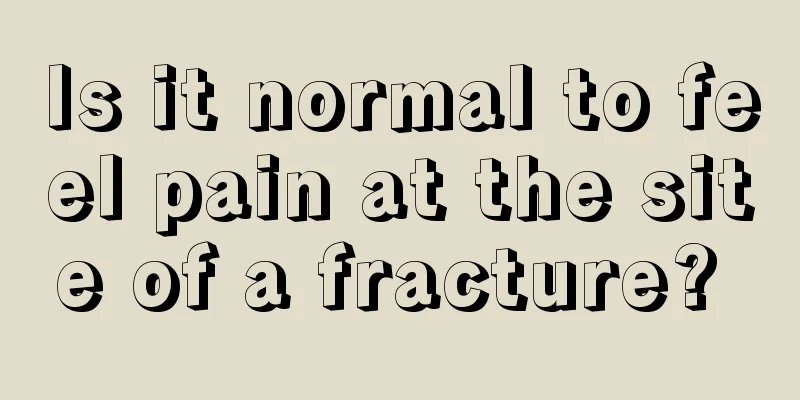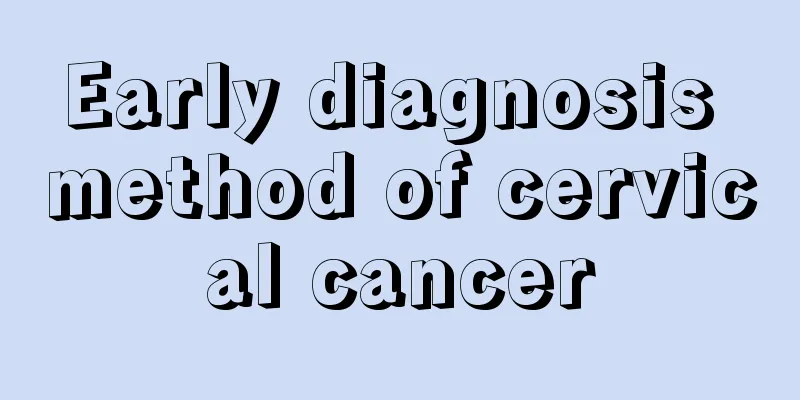Is it normal to feel pain at the site of a fracture?

|
Friends who have fractures will definitely experience obvious pain. You may not feel it at first, but after a few minutes you will feel a tingling pain. This is normal because pain is inevitable due to bone injury. The treatment of fractures generally requires fixation of the affected area, and then allowing the bones in the affected area to heal and grow on their own. Don’t underestimate this fixation process. If the fixation is not done well and the fracture position is displaced, then there will be problems with bone healing. Friends who have fractures must seek timely treatment to avoid abnormal bone growth due to delayed treatment, which can have a relatively large impact. The typical manifestations of fracture patients are local deformation after injury, abnormal movement of limbs, and bone friction sound when moving limbs. In addition, there is severe pain in the wound, local swelling and congestion, and movement disorders after injury. Move the patient as little as possible after an injury. If the patient must be moved, the movements must be cautious, gentle, and steady, with the principle of not increasing the patient's pain. The ultimate goal of treating a fracture is to restore the injured limb to the greatest possible size. Restore its function to the maximum extent possible. therefore. In the treatment of fractures, the three basic principles of reduction, fixation and functional exercise are very important. Step 1: Reset It is to restore the displaced fracture ends to their normal or close to normal position after fracture, so as to restore the supporting function of the bones. The methods of reduction include closed reduction, surgical reduction, and external fixator reduction. Step 2: Fix After the fracture is reduced, because it is unstable and prone to re-displacement, different methods should be used to fix it in a satisfactory position so that it can heal gradually. Commonly used fixation methods include: small splints, plaster bandages, external fixation brackets, traction and braking fixation, etc., which are called external fixation. If the surgery is performed to insert steel plates, steel needles, intramedullary nails, screws, etc., it is called internal fixation. Step 3: Functional Exercise By contracting the muscles of the injured limb, blood circulation in the tissues surrounding the fracture is increased, fracture healing is promoted, and muscle atrophy is prevented. By actively or passively moving the unfixed joints, joint adhesion and joint capsule contracture are prevented, so that the function of the injured limb can be restored to its normal state before the fracture as soon as possible. |
<<: Is left ventricular hypertrophy serious?
>>: How to treat itchy butt crack?
Recommend
How to reduce complications of pancreatic cancer
Surgery is still a common method for treating pan...
The difference between carambola and star fruit
When it comes to carambola, I think most people i...
Don’t do these 13 things after a meal
It is common sense that wrong diet will harm your...
Low-fiber diet is closely related to the cause of colorectal cancer
In recent years, with great progress in the diagn...
Introduction to several important causes of lung cancer
In recent years, more and more people in China ha...
Why do you have thick lips?
Some people have thick lips due to congenital fac...
The benefits of smooth bowel movements to the human body
Constipation is a common problem in the human bod...
In addition to eating, these things are also the root cause of your weight gain
"I gain three pounds during every festive se...
How to remove birthmarks on the belly
Who doesn't want flawless skin? However, the ...
Methods of postoperative treatment for breast cancer
What are the treatment methods after breast cance...
How to dress for pregnant women in autumn and winter
Pregnant women need to keep warm during pregnancy...
The benefits of drinking soy milk, soy milk can prevent and treat high blood pressure, coronary heart disease, and prevent aging
Soy milk is rich in plant protein, phospholipids,...
Will stage three endometrial cancer kill you?
The third stage of endometrial cancer is a period...
How to clean scale in domestic hot water pipes
We all know that water heaters are a kind of bath...
How to keep clothes from getting wet under the armpits
In life, there are always some people who are bor...









